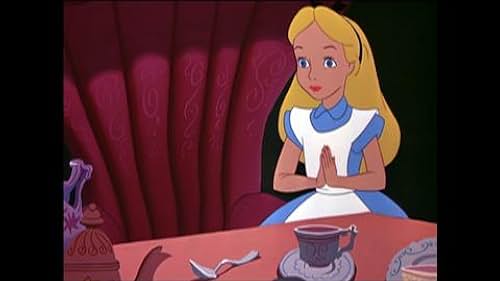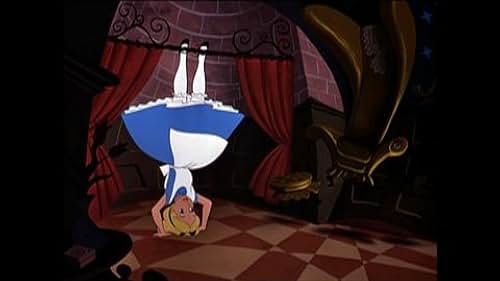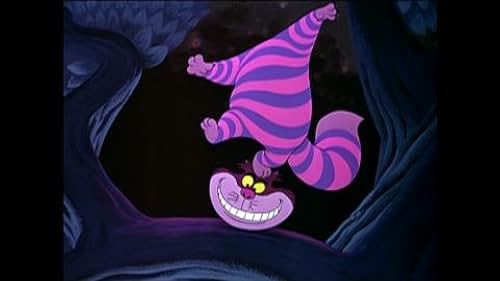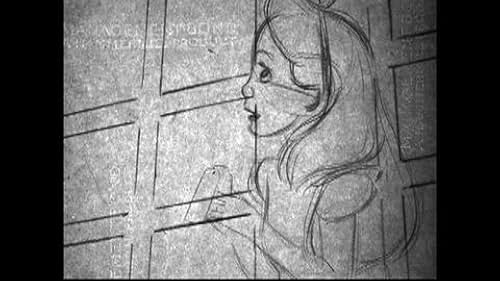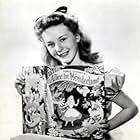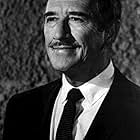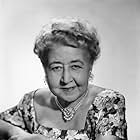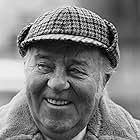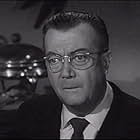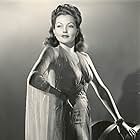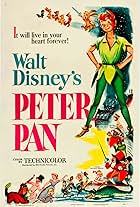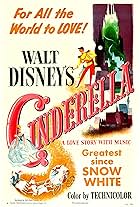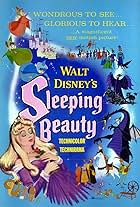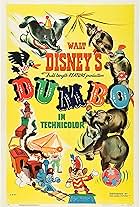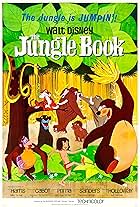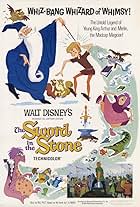Alice stumbles into the world of Wonderland. Will she get home? Not if the Queen of Hearts has her way.Alice stumbles into the world of Wonderland. Will she get home? Not if the Queen of Hearts has her way.Alice stumbles into the world of Wonderland. Will she get home? Not if the Queen of Hearts has her way.
- Nominated for 1 Oscar
- 1 win & 2 nominations total
Kathryn Beaumont
- Alice
- (voice)
Ed Wynn
- Mad Hatter
- (voice)
Richard Haydn
- Caterpillar
- (voice)
Jerry Colonna
- March Hare
- (voice)
Verna Felton
- Queen of Hearts
- (voice)
J. Pat O'Malley
- Walrus
- (voice)
- (as Pat O'Malley)
- …
Bill Thompson
- White Rabbit
- (voice)
- …
Heather Angel
- Alice's Sister
- (voice)
Joseph Kearns
- Doorknob
- (voice)
Larry Grey
- Bill
- (voice)
Dink Trout
- King of Hearts
- (voice)
Doris Lloyd
- The Rose
- (voice)
James MacDonald
- Dormouse
- (voice)
The Mellowmen Quartet
- Card Painters
- (voice)
- (as The Mellomen)
Don Barclay
- Other Cards
- (voice)
Lynn Bari
- Lily of the Vally
- (uncredited)
Storyline
Did you know
- TriviaIn the Walrus and the Carpenter sequence, the R in the word "March" on the mother oyster's calendar flashes. This alludes to the old adage about only eating oysters in a month with an R in its name. That is because those months without an R (May, June, July, August) are the summer months in England, when oysters would not keep due to the heat, in the days before refrigeration.
- GoofsIn the opening credits, Lewis Carroll is spelled Lewis Carrol, missing the last letter L.
- Crazy creditsThe RKO Radio Pictures logo appears on a banner held by two playing cards.
- Alternate versionsThe 1954 TV screening on the The Magical World of Disney (1954) series was edited down to a one hour running time, and contained an introduction from Walt Disney at the start. This introduction appears on the Region 1 Masterpiece Edition of the film.
- ConnectionsEdited from Bambi (1942)
- SoundtracksVery Good Advice
(1951) (uncredited)
Lyrics by Bob Hilliard
Music by Sammy Fain
Performed by Kathryn Beaumont
Featured review
Right from the stunning (hand drawn!) opening sweep of a verdant riverbank on a lazy summer's day, "Alice in Wonderland" is one of the most beautifully animated of the Disney films of the 1950s. Unfortunately, this film has always been one of the most maligned in the Disney canon.
Many books on the subject of Disney's animated films will often only devote a paragraph or two to the film, and in that short paragraph it will invariably mention how "Alice" was a financial flop, how Walt Disney himself wasn't very fond of it, how it's a chilly film. I don't find this film chilly, I find it refreshingly free of sentiment or cliche that can often weigh down other Disney films.
To start with, we have Alice. Unlike Cinderella or Snow White, Alice has a lot of personality. Who among us hasn't been very frustrated that Cinderella just took all the abuse from her stepmother and sisters and was powerless? Alice, on the other hand, is not one of the "shy little violets" and operates on more than just one emotion; she gets mad, befuddled, disgusted, amused, angry and, best of all, she stands up to adults (how odd for the 50's) and tells them when they are being ridiculous. This film has a subversiveness that may have been unintentional in showing how the world of adults, with its rules and logic, can be purely nonsense and that a child can be the only sane person in the lot. (To be fair, this sentiment is in keeping with Lewis Carroll's original books.)
Alice is beautifully voiced by Kathryn Beaumont (who did a similarly excellent job as the voice of Wendy in "Peter Pan" a few years after.) The real appeal of Alice here is that unlike many other Disney heroines,Kathryn Beaumont was a young girl when she recorded the voice and therefore, Alice looks and sounds like a girl of a certain age. Contrast that to Mary Costa's voice and the animated figure of Sleeping Beauty who looks as if she could be a 1950s pinup model despite only being 16.
The story itself is a wild trip through an ever shifting dreamscape most notable for the wild color schemes that anticipate the 1960's motifs. This is not implying that "Alice in Wonderland" is one big drug reference; it is not. Many people who worked on this film have commented that it felt like the film was getting away from them, that the characters took on lives of their own. This is evident as the film just gets wilder and wilder as it goes on with the introductions of the most bizarre and colorful characters Disney ever brought to life.
The only real flaws in the film include a scene when Alice breaks down and berates herself for never following her own advice, this moment stops the film cold in the middle of what has been a non-stop thrill ride. The extremely abrupt ending of the film is a very strange choice. I think even an extra 20-30 seconds between Alice and her sister at the conclusion of the film would have made the film a little stronger.
Many books on the subject of Disney's animated films will often only devote a paragraph or two to the film, and in that short paragraph it will invariably mention how "Alice" was a financial flop, how Walt Disney himself wasn't very fond of it, how it's a chilly film. I don't find this film chilly, I find it refreshingly free of sentiment or cliche that can often weigh down other Disney films.
To start with, we have Alice. Unlike Cinderella or Snow White, Alice has a lot of personality. Who among us hasn't been very frustrated that Cinderella just took all the abuse from her stepmother and sisters and was powerless? Alice, on the other hand, is not one of the "shy little violets" and operates on more than just one emotion; she gets mad, befuddled, disgusted, amused, angry and, best of all, she stands up to adults (how odd for the 50's) and tells them when they are being ridiculous. This film has a subversiveness that may have been unintentional in showing how the world of adults, with its rules and logic, can be purely nonsense and that a child can be the only sane person in the lot. (To be fair, this sentiment is in keeping with Lewis Carroll's original books.)
Alice is beautifully voiced by Kathryn Beaumont (who did a similarly excellent job as the voice of Wendy in "Peter Pan" a few years after.) The real appeal of Alice here is that unlike many other Disney heroines,Kathryn Beaumont was a young girl when she recorded the voice and therefore, Alice looks and sounds like a girl of a certain age. Contrast that to Mary Costa's voice and the animated figure of Sleeping Beauty who looks as if she could be a 1950s pinup model despite only being 16.
The story itself is a wild trip through an ever shifting dreamscape most notable for the wild color schemes that anticipate the 1960's motifs. This is not implying that "Alice in Wonderland" is one big drug reference; it is not. Many people who worked on this film have commented that it felt like the film was getting away from them, that the characters took on lives of their own. This is evident as the film just gets wilder and wilder as it goes on with the introductions of the most bizarre and colorful characters Disney ever brought to life.
The only real flaws in the film include a scene when Alice breaks down and berates herself for never following her own advice, this moment stops the film cold in the middle of what has been a non-stop thrill ride. The extremely abrupt ending of the film is a very strange choice. I think even an extra 20-30 seconds between Alice and her sister at the conclusion of the film would have made the film a little stronger.
Details
- Release date
- Country of origin
- Official site
- Language
- Also known as
- Alicia en el país de las maravillas
- Filming locations
- Production company
- See more company credits at IMDbPro
Box office
- Budget
- $3,000,000 (estimated)
- Gross worldwide
- $865
- Runtime1 hour 15 minutes
- Aspect ratio
- 1.37 : 1
Contribute to this page
Suggest an edit or add missing content


